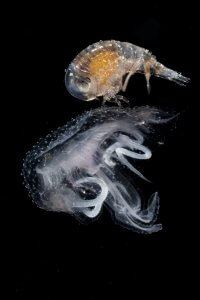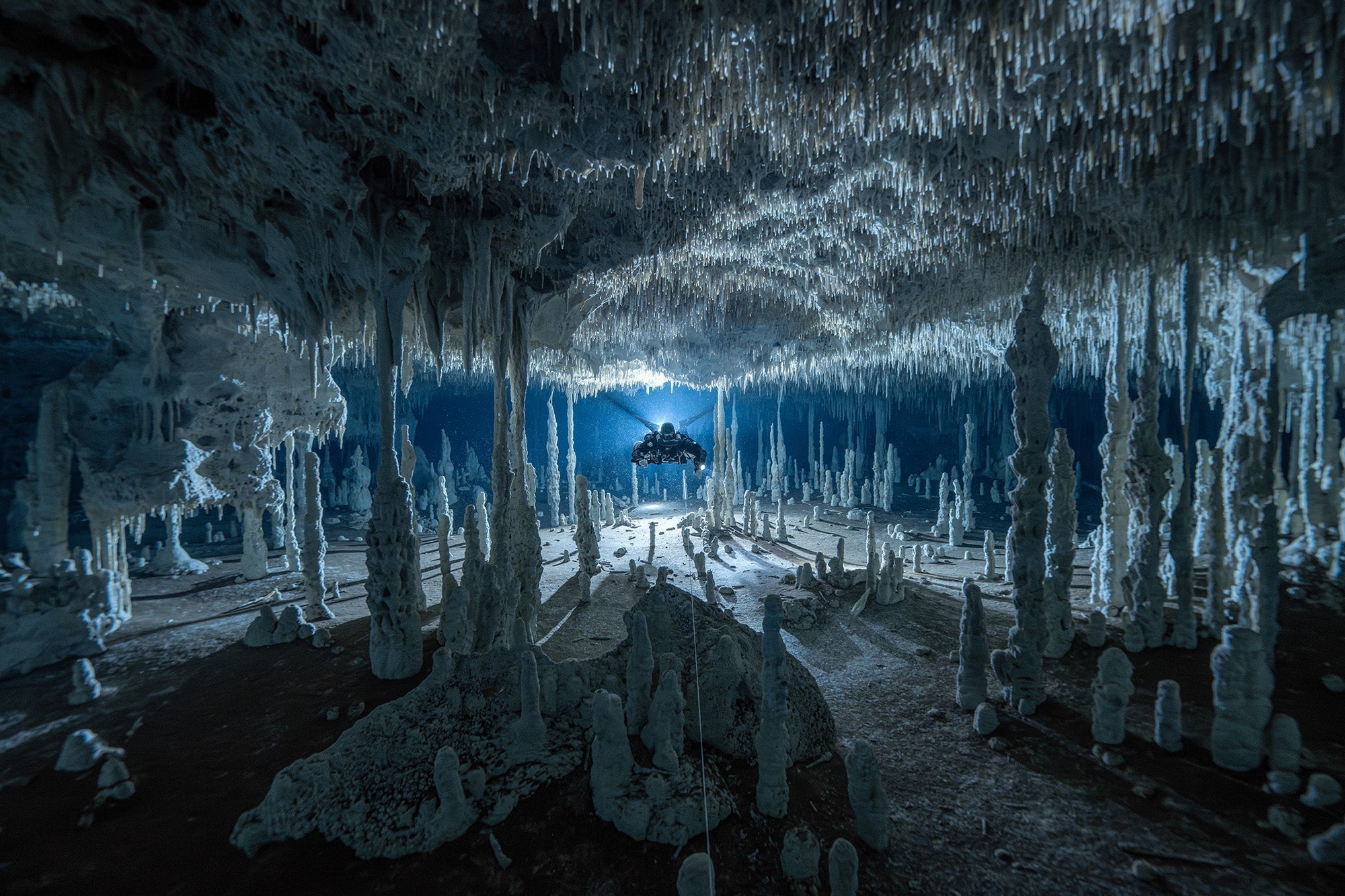Our friends from Divepro Asia in Philippines partnered up with other divers and photographers to contribute to the "Anilao" TV series which will air in the Fall of 2018. Ram Yoro is part of this project. In this blog post, Ram tells us about Bonfire Diving. Note.- Click on the images in this blog post to see a higher resolution, more detailed version of the image.
Time Check: 
“All set”, I muttered. “Let’s go”, my buddy Capper replied. Then we quickly paced the beach, huffing and puffing, for a shore entry dive. As soon as we reached waist deep water, it was liberating to lose the weight of our scuba gear, our cameras and the bunch of lights we were carrying for this particular late evening photo dive.
After we put on our fins, we slowly swam on our backs until we were approximately over 12 meters of water. Capper and I glanced at each other, checked our bearings, nodded simultaneously and began deflating our BCDs for a slow descent. Outside the limited range of our lights it was pitch black and was hard to tell how fast we were approaching the bottom. I had to rely heavily on my Perdix to manage our descent rate and avoid a free fall. As we continued downwards, I was scanning the surroundings and not long after I saw a familiar submerged buoy floating at around 6 meters – the usual spot for setting up our Bonfire lights. While I fixed our light baits atop the submerged buoy, a surge of excitement in anticipation of what’s about to happen next overwhelmed me. From the shadows, I gazed at Capper and I could tell the look on his face, it’s Bonfire time!
Bonfire Diving, albeit new, has been gaining popularity in multiple diving destinations around the world. Its origins can be traced back to the more adventurous Blackwater Diving, where the idea is to setup light baits to attract plankton and deep critters that predictably migrate to the shallows every evening – a nightly phenomenon referred to as Vertical Migration. Bonfire and Blackwater however differ in depth: Bonfire is shallow (usually coastal and within recreational depths) while Blackwater is deep (open sea and beyond recreational depths). The difference in depth translates to varying probabilities in subject sightings. For instance, while there are numerous subjects common to both Bonfire and BW like larval fishes, e.g. Figure 1: Larval Lionfish, expectedly sightings of deep sea critters like the female paper nautilus and diamond squids are more probable in Blackwater whereas sightings of coastal plankton like polychaete worms, Figure 2: Polychaete with eggs, are more probable in Bonfire Diving. In any case, both Bonfire and Blackwater bring a new and exciting cosmos of subjects found in mid-water column for underwater photographers!
By taking advantage of the phototaxic tendencies of plankton and critters through Bonfire Diving, underwater photographers have the opportunity to document and present to the layman subjects that have been previously exclusive to scientific journals and laboratories only. As such, this specialty night dive has an eager following that is brimming with excitement arising from the novelty of its subjects. This excitement extends even to seasoned traditional macro photographers who are used to looking down for hours in muck sites, but fail to peek into the hidden world of the midwater column. For instance, Pelagic Gastropod Molluscs (Figure 3: Pelagic Gastropod Mollusc, a pelagic sea snail) and Sea Butterflies (Figure 4: Cavolina Sea Butterfly), are among the critters from midwater column that can be found only in Bonfire or Blackwater dives.
Aside from the novelty of subjects, the critters from Bonfire Diving are often an interesting display of evolution as their physical characteristics exhibit adaptations to survive in the harsh midwater habitat. These adaptations as especially common amongst larval critters. As surmised by scientists, larval critters are usually translucent and spikey by design to give them better odds in eluding predators. Because of these adaptations, they don’t look anything like their adult version and has earned the caution of taxonomists when classifying their species. The Early Larval Crab (Figure 5) and Larval Lobster (Figure 6) are some examples of the aforementioned.
Because of the unique midwater habitat, there are remarkable stories of how the critters behaved to survive the peculiarities of their world. For instance, some amphipods which aren’t very good swimmers are known to conserve energy by hitch hiking on jellyfish, Figure 7. There’s also the Phronima bug, Figure 8, which invades gelatinous critters like salps in order to lay eggs and rear babies from the inside – a convenient way to secure instant food for the babies amidst the vast midwater column. The Phronima’s habit is so bizarre that it inspired the behavior of aliens in the movie “Aliens”. Countless of other stories during Bonfire dives, perhaps even stranger, remain to be discovered and documented.
I was so immersed in the Bonfire Dive and just kept snapping away, not minding space and time in the water column. Suddenly I felt a tap on my shoulder – Capper, being the good buddy that he is, asked how much air I had left. “70 bar”, I signaled. I felt I could go on a bit more, but my body suddenly sensed it was tired when I read 96 minutes bottom time in my Perdix. Time to go up. There’s so much more to see out there, but I’ll save that for the next Bonfire Dive. Allow me to share with you though my favorite critter for the evening, the photogenic larval wunderpus, Figure 9.
Time Check:
---
---
Written by Ram Yoro
Ram co-authored with Andrew Marriott the “Guide to Anilao”, a comprehensive diving guidebook. The guidebook was published in partnership with the Philippine Commission on Sports & Scuba Diving and the Mabini Tourism Office. He is a scuba instructor and an underwater photographer. He is also a prolific Cave Diver exploring and documenting cave systems in the Philippines.














